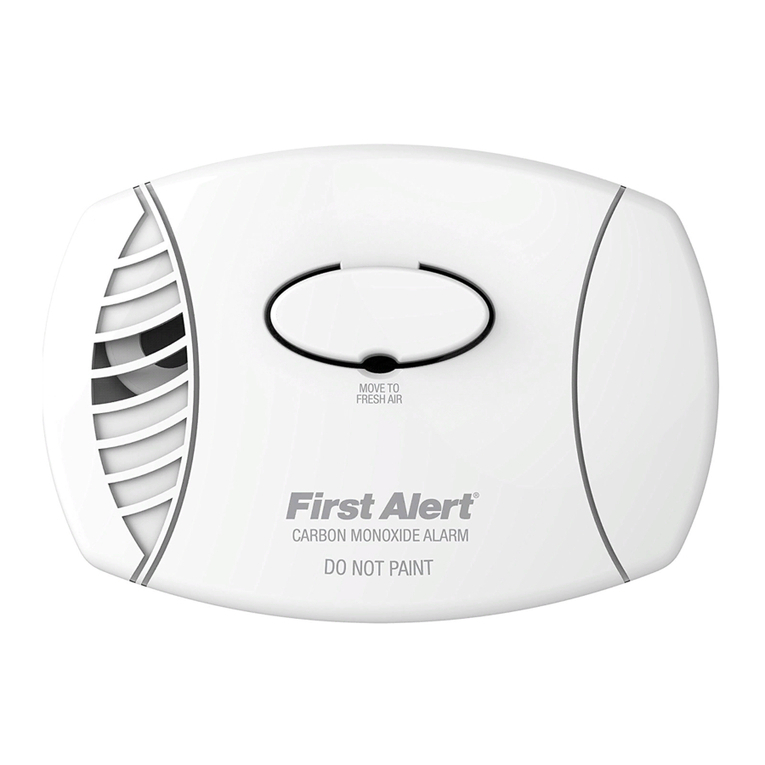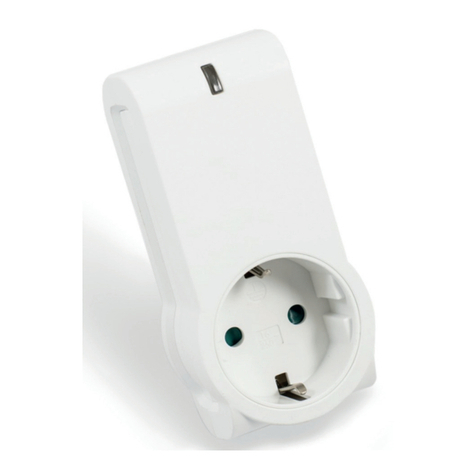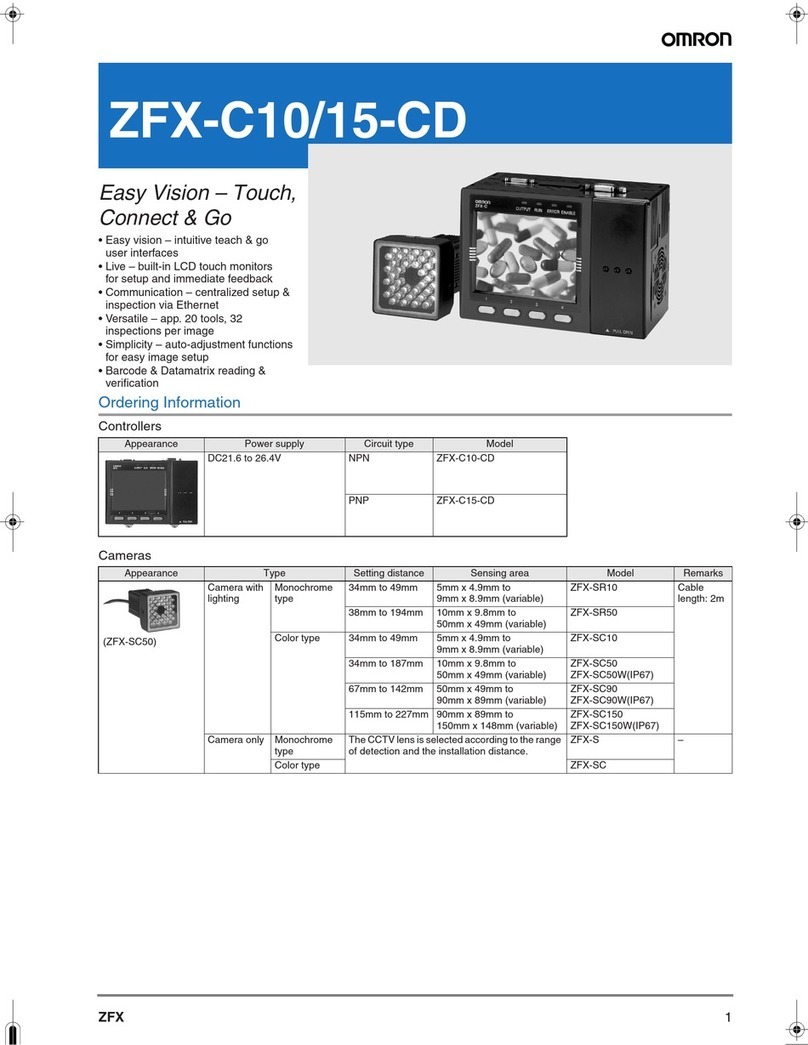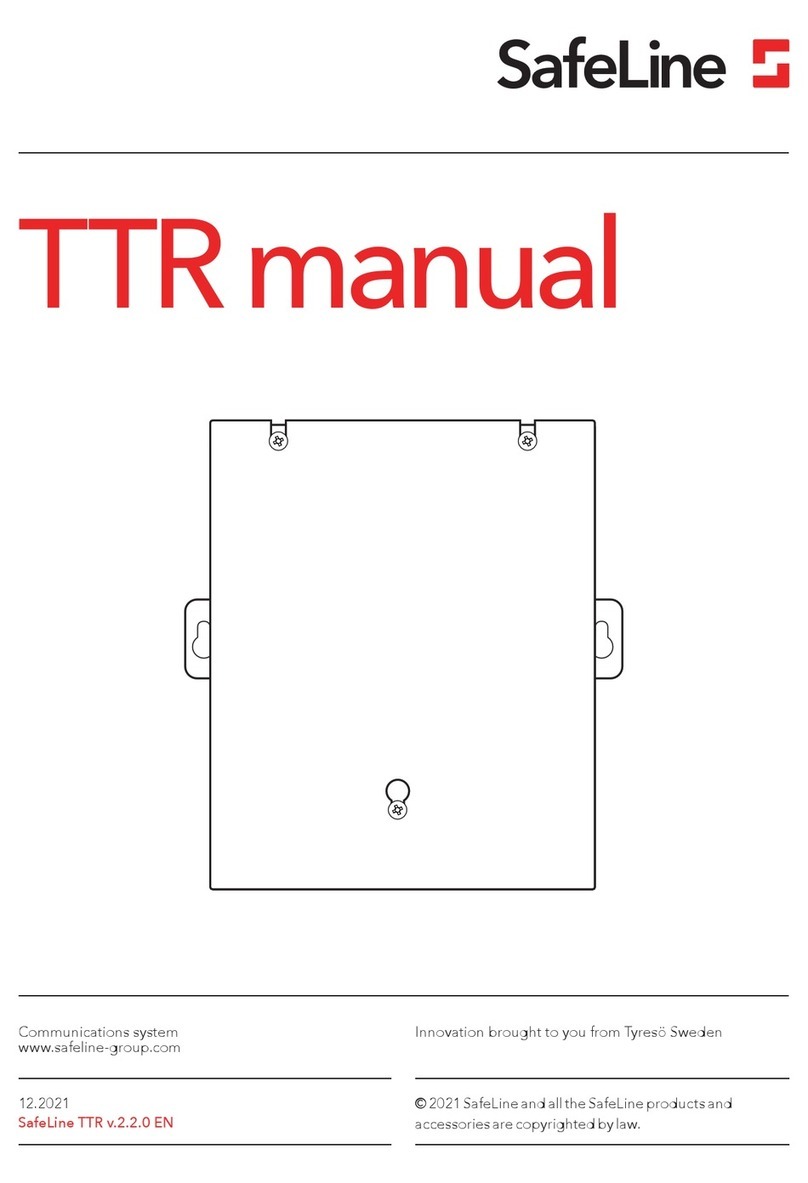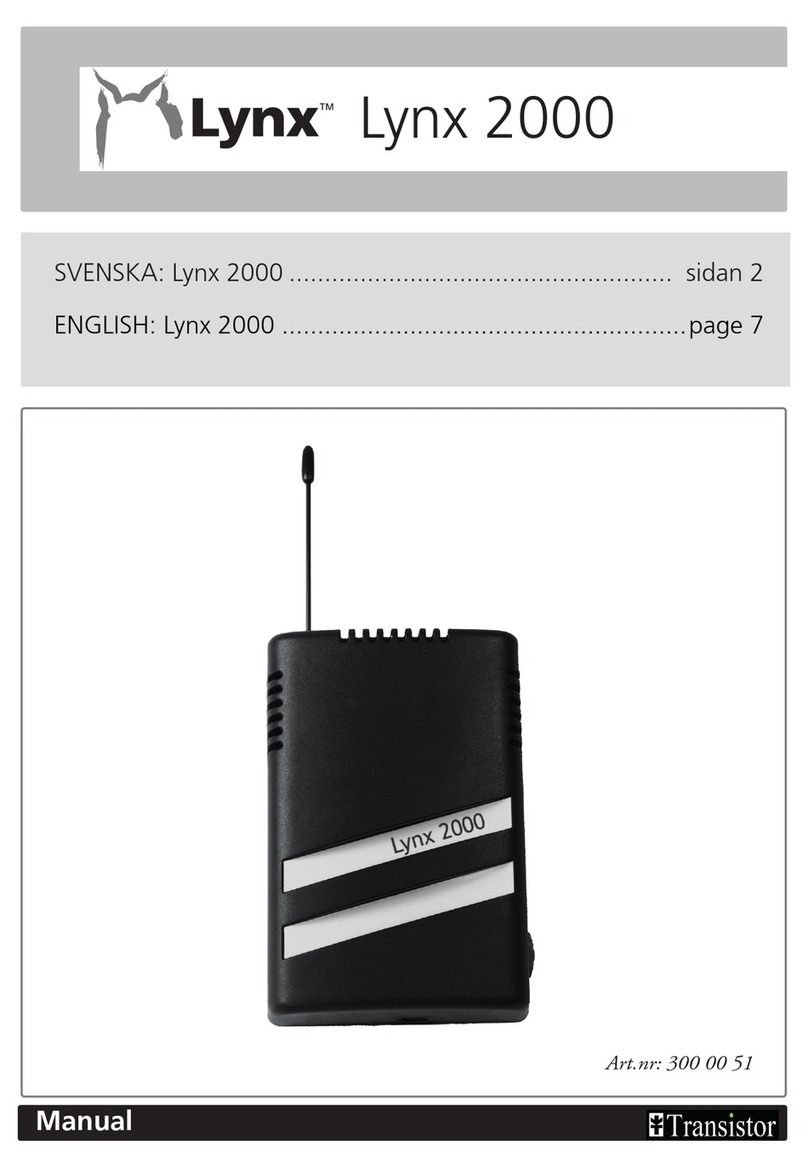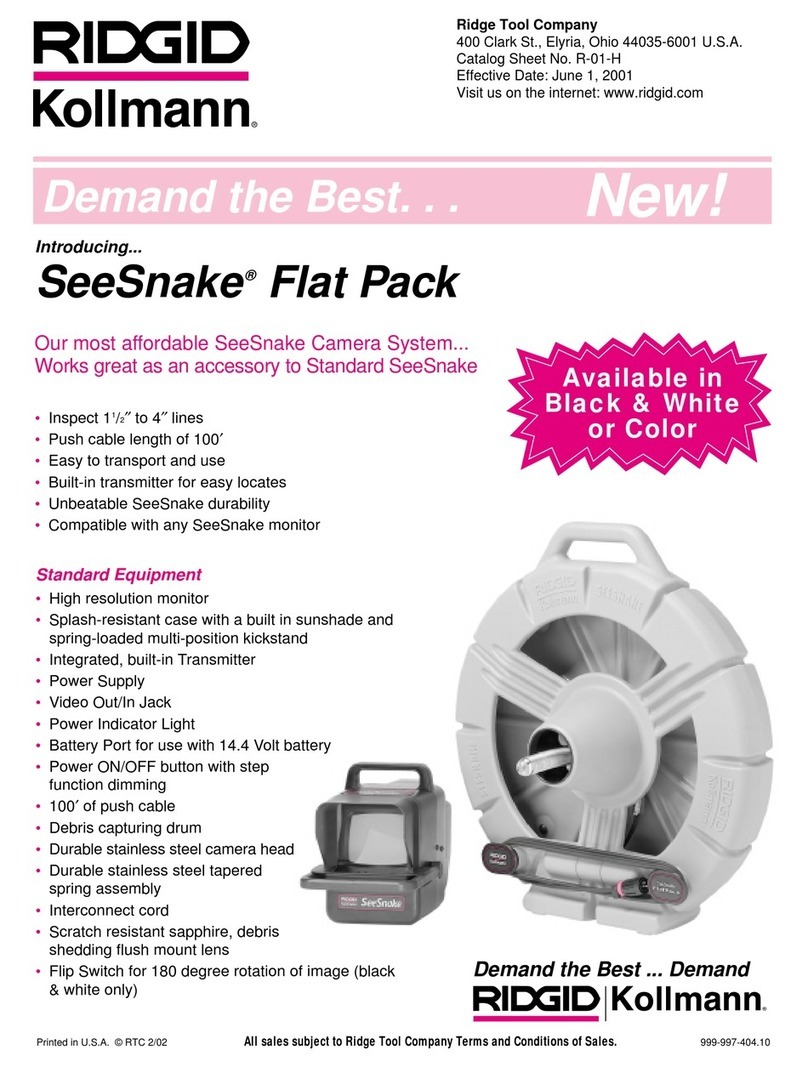Bellman & Symfon Visit 868 BE1410 User manual

Technical Solutions
ENGLISH 1.4

Safety regulations
• Read these Instructions.
• Keep these Instructions.
• Heed all Warnings.
• Follow all instructions.
• Do not use this apparatus near water.
• Clean only with a dry cloth.
• Do not block any of the ventilation openings. Install in accordance with the manufacturers instructions.
• Do not install near any heat sources such as radiators, heat registers, stoves, or other apparatus (including ampliers)
that produce heat.
• Do not defeat the safety purpose of the polarized or grounding - type plug. A polarized plug has two blades with
one wider than the other. A grounding type plug has two blades and a third grounding prong. e wide blade or the
third prong are provided for your safety. When the provided plug does not t into your outlet, consult an electrician
for replacement of the obsolete outlet.
• Protect the power cord from being walked on or pinched particularly at plugs, convenience receptacles, and the point
where they exit from the apparatus.
• Only use attachments/accessories specied by the manufacturer.
• Unplug this apparatus during lightning storms or when unused for long periods of time.
• Refer all servicing to qualied service personnel. Servicing is required when the apparatus has been damaged in any
way, such as power-supply cord or plug is damaged, liquid has been spilled or objects have fallen into the apparatus,
the apparatus has been exposed to rain or moisture, does not operate normally, or has been dropped.

Bellman Visit System Information Sida 3
Technical Solutions
Content
Technical Solutions .............................................................................................................................................................................................................1
Safety regulations ...............................................................................................................................................................................................................2
Content ...................................................................................................................................................................................................................................3
Bellman Visit 868
Transmitters
BE1410 Bellman Visit 868 Door Transmitter ..............................................................................................................................................................5
BE1420 Bellman Visit 868 Pushbutton Transmitter ..............................................................................................................................................15
BE1430 Bellman Visit 868 Telephone Transmitter .................................................................................................................................................21
BE1480 Bellman Visit 868 Smoke Alarm ...................................................................................................................................................................29
BE1490 Bellman Visit 868 Baby Cry Transmitter ....................................................................................................................................................37
BE1510 Bellman Visit 868 Repeater.............................................................................................................................................................................43
BE1520 Bellman Visit 868 Bridge .................................................................................................................................................................................51
BE1530/BE1550 Bellman Visit 868 Smoke Alarm Transmitter ...........................................................................................................................61
Receivers
BE1440 Bellman Visit 868 Flash Receiver ..................................................................................................................................................................69
BE1450 Bellman Visit 868 Portable Receiver ...........................................................................................................................................................77
BE1452 Bellman Visit 868 Portable Audio Receiver ..............................................................................................................................................85
BE1465 Bellman Visit 868 Guard Receiver ................................................................................................................................................................93
BE1470 Bellman Visit 868 Pager ................................................................................................................................................................................ 107
BE1260 Bellman Visit Charger .....................................................................................................................................................................................115
BE1500 Bellman Visit 868 Alarm Clock ....................................................................................................................................................................117
BE1540 Bellman Visit 868 Portable Flash Receiver ............................................................................................................................................ 127
BE1560/BE1570 Bellman Visit 868 Wrist Receiver and Charger ..................................................................................................................... 135
Stand Alone
BE1010 Bellman Ringer ................................................................................................................................................................................................. 145
BE1341 Bellman Alarm Clock ...................................................................................................................................................................................... 147
BE1390 Bellman Ringer Flash ..................................................................................................................................................................................... 153
Hearing Protectors
BE1605-BE1608 ER-20 ................................................................................................................................................................................................... 155
Audio
BE1140 Bellman SCART Loop Amplier ................................................................................................................................................................. 157
BE1150 Bellman Loop Cushion .................................................................................................................................................................................. 159
BE2020 Bellman® Audio Maxi Digital Communication Aid ............................................................................................................................161
BE2210 / BE2230 Bellman® Audio Domino Personal Hearing System ....................................................................................................... 169
Accesories
Bellman Visit 868 & Stand Alone
BE1270 Bellman Bed-shaker ....................................................................................................................................................................................... 187
BE9023 Bellman Magnetic switch ............................................................................................................................................................................ 189
BE9024 Bellman Contact mat .................................................................................................................................................................................... 189
BE9200 and BE9199 Bellman External Door Microphone ............................................................................................................................... 191
BE9086 Bellman External Trigger Cable ............................................................................................................................................................... 193
BE9003 Bellman Outdoor Telephone ringer ........................................................................................................................................................ 195
Audio
BE9122 Bellman Stereo headphones ...................................................................................................................................................................... 197
BE9124 Bellman Ear phones ...................................................................................................................................................................................... 197
BE9128 Bellman Neck Loop ........................................................................................................................................................................................ 199

Bellman Visit System Information
Sida 4 Technical Solutions
Welcome to Bellman & Symfon AB!
ank you for your interest in our products. We hope that you will make
extensive use of this technical manual, which describes the products in our
Hearing Solutions range. Please note that Bellman & Symfon AB are continually
working to improve and develop the products used by our customers. Bellman
& Symfon AB therefore reserve the right to alter the physical or functional
properties of products without prior notication, and some products may
therefore dier from their description in this manual.
For the latest version of the Technical manual, see http://www.bellman.se
or http://www.bellman.com
Please contact us with any comments or questions regarding this manual or our products.
Our contact information is:
Bellman & Symfon AB
Södra Långebergsgatan 30
421 32 Västra Frölunda Sweden
Email: [email protected]
Tel: +46 31 68 28 20
Fax: +46 31 68 28 90
With kind regards,
Bellman & Symfon AB
Jonas Eek
Production and Service Manager

Bellman Visit System Information Page 5
Technical Solutions
Introduction
ank you for choosing products from Bellman & Symfon.
e Bellman Visit 868 System consists of a number of radio transmitters and
receivers. e transmitters detect dierent events in the surrounding area and
transmit a radio signal to the receivers. e receivers pick up this signal and
provide indications using light, sound and/or vibration.
e transmitter determines what type of light, sound or vibration should be
displayed so that the reason for the indication is evident.
Read through the entire user manual rst and then start to install the system.
Refer to the illustration of the Bellman Visit 868 System on the inside of the
cover.
Getting started
Unpacking, installing and testing the unit
1. Open the battery cover (3). Fit one 9V battery, either a 6LR61 alkaline or
6F22 lithium type battery, and close the battery cover.
2. Press the Test Button (2). e Bellman Visit 868 Door Transmitter lights
up the LED (1) to indicate that the unit is transmitting a radio signal. e
Bellman Visit 868 receivers will indicate the Door Transmitter. e Door
Transmitter waits until it has been quiet for two seconds in order to avoid
acoustic feedback.
3. e Bellman Visit 868 Door Transmitter should be placed on the wall
or door no more than 3 cm from the doorbell. e door transmitter is
mounted either suspended on the wall mount bracket (5) on the screw
supplied or using the self-adhesive Velcro tape, see illustrations 1–3 below.
If the Velcro tape is used, the wall can be cleaned using the enclosed wet
wipe.
Bellman Visit 868 Door
Transmitter
BE1410
Technical information
Power supply
Battery power:
9 V 6LR61 alkaline
9 V 6F22 lithium
Operating time:
6LR61 alkaline: approximately 5 years
6F22 lithium: approximately 10 years
Power consumption: Active: < 30 mA
Idle position: < 10 μA
Radio function
Radio frequency: 868.3 MHz
Number of Radio Keys: 64 Radio Keys
as standard. Special software can be used
to increase these to 256 Radio Keys in
increments of 64 per software purchase.
Contact the nearest supplier for further
information.
Coverage: e normal coverage between a
transmitter and receiver in the Bellman
Visit 868 System is approximately 200
metres with a clear line of sight. Coverage
is reduced if walls and large objects screen
o the signals. Any thick walls constructed
of reinforced concrete will greatly aect
coverage. e system may also be aected by
radio transmitters, such as TV transmitters,
computers, mobile phones, etc. is means
that a unit may work perfectly in one part of
the room but not at all in another.
Activation
Via test button
Via internal microphone
Via external microphone
Via built-in magnetic coil
Additional information
For indoor use only
Size B x H x D: 80 x 145 x 36 mm
Weight: With battery: 190
Without battery: 155 g
Colour:White with a red triangle.
Accessories
BE9199/BE9200 Bellman External Door
Microphone
2
or
1
Max 30mm
3
BE1410

Bellman Visit System Information
Page 6 Technical Solutions
Function
General
e BE1410 Bellman Visit 868 Door Transmitter is a radio transmitter within the Bellman Visit 868 System for
indoor use, which recognises the sound emitted by a doorbell.
e door transmitter is activated by the built-in microphone, via electromagnetic elds or via a BE9199/BE9200
Bellman External Door Microphone (accessory). On delivery the Door Transmitter is set to standard detection,
which is suitable for most doorbells.
e BE1410 Bellman Visit 868 Door Transmitter is suitable for use with a doorbell which gives a clear tone without
any signicant and rapid variations in sound. If the doorbell is electromechanical, the Door Transmitter also detects
the electromagnetic eld emitted by the doorbell. It is important that the Doorbell emits a detectable sound so that
the door transmitter does not misinterpret it as speech, music, a vacuum cleaner or something else one does not
want the door transmitter to respond to.
If there are diculties in getting the Door Transmitter to respond to the doorbell, a BE9199 or BE9200 Bellman
External Door Microphone can be used instead of the Door Transmitter’s internal microphone.
If the current doorbell, door telephone or telephone sound is dicult to detect even with the External Door
Microphone, we recommend using a dierent solution. Other conceivable solutions are the BE1420 Bellman Visit
868 Pushbutton Transmitter or BE1430 Bellman Visit 868 Telephone Transmitter.
e Pushbutton Transmitter is a transmitter that can be placed on the outside of the door and this means that a
normal doorbell is not required.
e Telephone Transmitter is a multiway transmitter which can be connected electrically to an existing doorbell.
is cannot be done with all doorbells, door telephones or telephones.
Using the Bellman External Door Microphone BE9199/BE9200
If the BE9199/BE9200 Bellman External Door Microphone is used, the Bellman Visit 868 Door Transmitter can
detect the dierence between the sound coming from the internal microphone and the external door microphone.
Using this function, the Door Transmitter can transmit dierent signals depending on which microphone the
sound is coming from. e External Door Microphone can, for example, be used for a doorbell with a sound that is
dicult for the internal microphone to detect, a door telephone or a telephone.
Please note: Do not place the Door Transmitter too close to the External Microphone since the internal microphone
may interfere with the External Microphone.
It is important for the doorbell, door telephone or telephone to emit a loud enough sound, so that other loud
sounds in the vicinity do not deceive the Door Transmitter into believing that it is the doorbell, door telephone
or telephone. e sensitivity of the External Door Microphone can be adjusted using the training function and
this allows adjustments to be made to the doorbell, door telephone or telephone. It is important to carry out this
adaptation to ensure that the Door Transmitter operates as well as possible.
Sound training
The BE 1410 Bellman Visit 868 Door Transmitter can be sound trained from a maximum of three different
sound sources. The advantages of this are mainly that the Door Transmitter will be able to give a different
indication according to which sound source activates it, but also that this function will help to ensure that the Door
Transmitter is only activated by the desired sound source.
The Bellman Visit 868 Door Transmitter has three training options, two for the internal microphone and one for
the external microphone.
The requirements for a Door Transmitter to detect a sound is that it sounds in the same way every time, that it is
long enough and that it does not vary too rapidly.
Proceed as follows to program a sound:
BE1410

Bellman Visit System Information Page 7
Technical Solutions
1. Change the Programming Switch (8) from Normal to the desired position, Int. Mic. 1, Int. Mic. 2 (for
detection via the internal microphone) or Ext. Mic. (for detection via a Bellman External Door Microphone).
2. Place the Door Transmitter near to the doorbell that is to be trained to it.
3. Make sure that it is quiet.
4. Press the Test Button (2).
5. The LED (1) lights up yellow to indicate that the Door Transmitter is in training mode and is waiting for the
sound that it is to be trained for.
6. Activate the doorbell.
7. The LED (1) will now blink green while the Door Transmitter analyses the sound.
8. If the training is accepted, the LED (1) will light up green. Some sounds are difcult to analyse and therefore
difcult to detect afterwards. Therefore always check to ensure that the Door Transmitter is detecting the
doorbell correctly after training. If this does not work, refer to the next step.
9. If the sound cannot be analysed, the LED (1) will light up yellow. You can try to train for the sound again by
repeating steps 1 to 6. If it still does not work, the doorbell has a sound that the Door Transmitter cannot
analyse. In this case try to change the doorbell sound if it has this option and then repeat steps 1 to 6. If that
does not work either, test by using an External Door Microphone and then repeat steps 1 to 6.
10. Reset the Programming Switch (8) to Normal position.
11. The Bellman Visit 868 Door Transmitter is now ready to use.
If no sound is programmed with the training function, standard detection is used which works in most cases.
BE1410
Please note:
All Bellman Visit 868 products within the same system
must be tuned to the same Radio Key in order to operate
as a group.
Resetting the trained sound
Proceed as follows to remove a trained sound:
1. Change the Programming Switch (8) from Normal to the position to be deleted.
2. Hold in the test button (2). e LED (1) will light up yellow.
3. When the LED (1) lights up green, deletion is complete.
4. Reset the Programming Switch (8) to Normal position.
5. e Bellman Visit 868 Door Transmitter is now ready to use.
If you wish to use standard detection for incoming sound via the internal microphone, both Int. Mic. 1 and Int.
Mic. 2 must be deleted.
Radio key
On delivery all Bellman Visit 868 units are tuned to the same Radio Key. If you have a neighbour with a similar
system, you can change to dierent Radio Keys so that you do not aect each other’s systems. All units in a system
must have the same Radio Key. If you use the Radio Key Switch (7) to change the Radio Key on this transmitter,
you must also change all other units in your Bellman Visit 868 System to the same Radio Key. Refer to the user
manual for the relevant unit.
Indicators and Signals
System indicators
When the LED (1) lights up, the Door Transmitter transmits radio signals.
Power supply
When the Door Transmitter is activated, the LED (1) normally lights up green. is means that the battery is
in good condition.
If the LED (1) lights up yellow, this means that the battery is at and must be changed. Only use a 6LR61
(alkaline) or 6F22 (lithium) type battery.

Bellman Visit System Information
Page 8 Technical Solutions
Fault warning
e LED (1) ashes yellow when the Door Transmitter is exposed to high noise levels or an electromagnetic eld for
longer than 15 seconds. If the LED blinks even when there is no noise, the reasons may be:
1. It is located in a constant electromagnetic eld.
2. e microphone tted in the external microphone socket (9) is faulty.
Troubleshooting in brief
Problem Solution
Nothing happens when the transmitter is activated with the
Test Button (2). • e Door Transmitter waits until it has been quiet for two seconds in
order to avoid acoustic feedback. Try again.
• Change the battery. Only use an alkaline 6LR61 or a lithium 6F22
type battery.
e LED (1) lights up yellow when the Door Transmitter is
activated. • Change the battery. Only use an alkaline 6LR61 or a lithium 6F22
type battery.
e LED (1) lights up green when the Door Transmitter is
activated, but the receivers are not signalling.
e LED (1) blinks yellow
• Check the battery in the receiver.
• Check that the receivers are not placed too far away by moving them
closer to the transmitter.
• Check that the Door Transmitter is set to the correct Radio Key. For
further information see Function/Radio key.
e LED (1) blinks yellow • Make sure that it is quiet by the Door Transmitter.
• Turn o the magnetic coil if an electromagnetic eld from an
inductive loop, etc., is causing a fault to be indicated.
• Disconnect the External Microphone in case a faulty microphone is
connected.
e doorbell rings but the Door Transmitter is not activated. • Move the Door Transmitter around the doorbell both closer and
further away. e normal distance is about 3 cm from the doorbell.
• Try to train the Door Transmitter with the relevant doorbell sound.
For further information see Function/Sound training.
• Does the doorbell have a ring signal which varies signicantly
in strength and/or tone? In this case it may be dicult to detect
this doorbell using the training function. Try resetting the Door
Transmitter to standard. For further information see Function/
Resetting the trained sound.
• Rectify the problem as indicated in the descriptions under Function/
General and Function/Using the Bellman External Door Microphone
BE9199/BE9200
e receivers in the system transmit signals for no reason. • Change the Radio Key on all units in the system. For further
information see Function/Radio key
• Try to train the Door Transmitter with the relevant doorbell sound.
For further information see Function/Sound training.
• Rectify the problem as indicated in the descriptions under Function/
General and Function/Using the Bellman External Door Microphone
BE9199/BE
BE1410

Bellman Visit System Information Page 9
Technical Solutions
1 2 3 4 5 6 7 9 8
1. LED. Combined transmission
and battery indicator. For further
information see Indicators and
Signals
2. Test button/pushbutton
3. Battery cover
4. Microphone
5. Wall mount bracket
6. Signal switch
7. Radio key switch
8. Programming switch which should remain in
the “Normal” position
9. External microphone socket
BE1410

Bellman Visit System Information
Page 10 Technical Solutions
Appendix
Further information
Connection
Connecting an External Microphone
e BE1410 Bellman Visit 868 Door Transmitter has an option to connect a BE9199/BE9200 Bellman
External Door Microphone (accessory) to the Microphone Socket (9). By using the external microphone
the Door Transmitter can also pick up sounds from sound sources which are not located close to the Door
Transmitter, e.g. door phones and telephones with a suitable ring signal.
For more information about the indications provided by the receivers in the Bellman Visit 868 System, refer to
Appendix/Further information/Settings/Signal pattern and Appendix/Further information/Settings/Setting the
activation pattern.
Settings
No adjustments are required for normal use. e relevant descriptions are provided below, if you wish to
change a setting for some reason.
Radio key
In order to use several Bellman Visit 868 Systems close to one another without interference, dierent Radio
Keys can be set on the dierent systems. All Bellman Visit 868 System units are supplied from the factory
tuned to the same Radio Key, channel 0. is means that all Radio Key Switches on the transmitters are set to
the OFF position.
• To alter the Radio Key, move the Radio Key Switches (7) to the desired positions.
Please note:
All Bellman Visit 868 products within the same system
must be tuned to the same Radio Key in order to operate
as a group.
Signal pattern
A Signal Pattern is the name for the way in which a receiver in the Bellman Visit 868 System indicates
activation. Changing the transmitters’ Signal Switch changes the Signal Pattern which the receivers display
when the transmitter is activated. Follow the instructions under Appendix/Further information/Settings/
Setting the activation pattern to make your choice.
e following signal patterns are available for the Bellman Visit 868 Door Transmitter:
Type LED pattern Sound Vibration Flash
Green 1 Green is constantly lit 1 x ding dong, low-
frequency tone Separate Yes
Green 2 Green blinks in sequences of two 2 x ding dong, low-
frequency tone Separate Yes
Green 3 Green blinks in sequences of three 1 x ding dong, high-
frequency tone Separate Yes
Green 4 Green blinks constantly 2 x ding dong, high-
frequency tone Separate Yes
Yellow 1 Yellow is constantly lit 1 x ring, low-frequency
tone Short Yes
Yellow 2 Yellow blinks in sequences of two 2 x ring ring, low-
frequency tone Short Yes
Yellow 3 Yellow blinks in sequences of three 1 x ring, high-
frequency tone Short Yes
Yellow 4 Yellow blinks constantly 2 x ring ring, high-
frequency tone Short Yes
BE1410

Bellman Visit System Information Page 11
Technical Solutions BE1410
Setting the Activation Pattern
e Bellman Visit 868 Door Transmitter can be activated in three dierent ways.
On delivery the Door Transmitter sends the same signal regardless of the input
causing the activation.
Using the Training Mode, dierent sounds can make a Door Transmitter
transmit dierent signal patterns according to the sound that has activated the
Door Transmitter. For further information see Settings/Sound training.
Magnetic
detection
Transmitted
signal, see
manual
On Off
e gure below shows the standard settings that are available:
Signal pattern on activation from:
Signal switch Electromagnetic
detection
On (up)
Standard, Int. Mic. 1
and Test Button Int. Mic. 2 Ext.Mic.
O GREEN1 GREEN4 GREEN2
O GREEN2 GREEN2 YELLOW1
O GREEN3 GREEN2 YELLOW2
O GREEN4 GREEN1 GREEN3
O GREEN1 GREEN3 GREEN4
O GREEN2 GREEN4 YELLOW4
O GREEN3 GREEN1 YELLOW3
O GREEN4 GREEN2 GREEN1
On GREEN1 GREEN4 GREEN2
On GREEN2 GREEN3 YELLOW1
On GREEN3 GREEN2 YELLOW2
On GREEN4 GREEN1 GREEN3
On GREEN1 GREEN3 GREEN4
On GREEN2 GREEN4 YELLOW4
On GREEN3 GREEN1 YELLOW3
On GREEN4 GREEN2 GREEN1

Bellman Visit System Information
Page 12 Technical Solutions
Electromagnetic detection
To further improve the exibility of the Bellman Visit 868 Door Transmitter, it can detect the electromagnetic
elds emitted by an electromechanical doorbell. e advantage of this is a further detection option, which
eliminates the risk of missed activations. e Door Transmitter must be mounted 3 cm max. from the
doorbell for the best results.
If there is a constant magnetic eld close to the Door Transmitter, this will be indicated by the LED (1)
blinking orange. In this case turn o electromagnetic detection by setting the rst switch on the Signal
Switches (6) to OFF. For further information see Appendix/Further information/Settings/Setting the
Activation Pattern.
Testing
It is easy to test the Bellman Visit 868 Door Transmitter. If it does not work as described below, you can
check further under Troubleshooting/Troubleshooting guide.
How to test
Proceed as follows to check the Door Transmitter’s transmitter:
• Press the Test Button (2).
• e Door Transmitter should now light up LED (1) to show that it has been activated and to show
that it is transmitting a signal to the receivers in the Bellman Visit 868 System.
• e receivers in the system will indicate an alarm according to the way that the Door Transmitter
has been set up using the Signal Switches (6).
Proceed as follows to check all Door Transmitter functions:
• Check that the Door Transmitter is correctly connected. Refer to Getting started/Unpacking, tting
and testing the unit for connection instructions.
• Activate the Door Transmitter with the relevant doorbell.
• e Door Transmitter should now light up LED (1) to show that it has been activated and to show
that it is transmitting a signal to the receivers in the Bellman Visit 868 System.
• e receivers in the system will indicate an alarm according to the way that the Door Transmitter
has been set up using the Signal Switches (6).
BE1410

Bellman Visit System Information Page 13
Technical Solutions BE1410
Troubleshooting
You can carry out a number of checks yourself before sending a product for repair.
Troubleshooting
Problem Solution
Nothing happens when the transmitter is activated with the test
button. • e Door Transmitter waits until it has been quiet for two
seconds in order to avoid acoustic feedback. Try again.
• Change the battery. Only use an alkaline 6LR61 or a
lithium 6F22 type battery.
• Check that all the connections are correct.
e LED (1) lights up yellow when the Door Transmitter is
activated. • Change the battery. Only use an alkaline 6LR61 or a
lithium 6F22 type battery.
e LED (1) lights up green when the Door Transmitter is
activated, but the receivers are not signalling. • Check the battery in the receiver.
• Check that all units in the Bellman Visit 868 System are
set to the same Radio Key. For further information see
Appendix/Further information/Settings/Radio key.
• Check that the receivers are not placed too far away by
moving them closer to the transmitter.
e receiver emits an alarm with a dierent signal pattern from
the one expected when it is activated by the Door Transmitter. • Set the Signal Switch to X000 to obtain the factory setting.
If the Training function is used, this can be deleted as
indicated in the instructions under Function/Resetting the
trained sound.
e doorbell rings but the Door Transmitter is not activated. • Move the Door Transmitter around the doorbell both
closer and further away. e normal distance is about 3 cm
from the doorbell.
• Try to train the Door Transmitter with the relevant
doorbell sound. For further information see Function/
Sound training.
• Does the doorbell have a ring signal which varies
signicantly in strength and/or tone? In this case it may be
dicult to detect this doorbell using the training function.
Try resetting the Door Transmitter to standard. For further
information see Function/Resetting the trained sound.
• Rectify the problem as indicated in the descriptions under
Function/General and Function/Using the Bellman
External Door Microphone BE9199/BE9200.
e door transmitter is activated when the doorbell is not
ringing. • Turn o the magnetic coil if an electromagnetic eld from
an inductive loop, etc., is causing activation. For further
information see Appendix/Further information/Settings/
Electromagnetic detection.
• Try to train the Door Transmitter with the relevant
doorbell sound. For further information see Function/
Sound training.
• Rectify the problem as indicated in the descriptions under
Function/General and Function/Using the Bellman
External Door Microphone BE9199/BE9200.
e LED (1) blinks yellow. • Make sure that it is quiet by the Door Transmitter.
• Turn o the magnetic coil if an electromagnetic eld from
an inductive loop, etc., is causing a fault to be indicated.
• Disconnect the External Microphone in case a faulty
microphone is connected.
e receiver signals when no transmitter is activated. • Change the Radio Key on all units in the relevant Bellman
Visit 868 System. ere is probably another system nearby
with the same Radio Key.

Bellman Visit System Information
Page 14 Technical Solutions
BE1410
is page intentionally left blank.

Bellman Visit System Information Page 15
Technical Solutions
Introduction
ank you for choosing products from Bellman & Symfon.
e Bellman Visit 868 System consists of a number of radio transmitters
and receivers. e transmitters detect dierent events in the surrounding
area and transmit a radio signal to the receivers. e receivers pick up this
signal and provide indications using light, sound and/or vibration.
e transmitter determines what type of light, sound or vibration should
be displayed so that the reason for the indication is evident.
Read through the entire user manual rst and then start to install the
system.
Refer to the illustration of the Bellman Visit 868 System on the inside of
the cover.
Getting started
Unpacking, installing and testing the unit
1. Separate the front (6) and the back sections. Fit one 6V battery, either
a PX28A alkaline or PX28L lithium type battery, and press the front
and back sections together again.
2. Press the Pushbutton (2). e Bellman Visit 868 Pushbutton
Transmitter lights up the LED (1) to indicate that the unit is
transmitting a radio signal. e Bellman Visit 868 receivers will
indicate the Door Signal.
3. Mount the Bellman Visit 868 Pushbutton Transmitter onto the
wall by driving the screws supplied through the hole marks on the
Wallmount Brackets (7) and into the wall or by using the double-
sided tape. e Pushbutton Transmitter can also be placed on a level
surface, e.g. a table, or it can be suspended around the neck on the
neck strap (8) which is secured by the neck strap attachment (5).
Function
General
e BE1420 Bellman Visit 868 Pushbutton Transmitter is a radio
transmitter within the Bellman Visit 868 System for indoor use and
outdoor use in sheltered locations, which transmits signals to the receivers
in the Bellman Visit 868 System when the Pushbutton (2) is pressed.
e Pushbutton Transmitter can transmit dierent Signal Patterns to the
receivers in the Bellman Visit 868 System depending on how it has been
set up.
Bellman Visit 868
Pushbutton Transmitter
BE1420
Technical information
Power supply
Battery:
6 V PX28A alkaline
6 V PX28L lithium
Operating time:
approximately 2 years
Power consumption:
Active: 35 mA
Idle position: < 0,05 μA
Radio function
Radio frequency: 868.3 MHz
Radio function
Radio frequency: 868.3 MHz
Number of Radio Keys: 64 Radio Keys
as standard. Special software can be used
to increase these to 256 Radio Keys in
increments of 64 per software purchase.
Contact the nearest supplier for further
information.
Coverage: e normal coverage between
a transmitter and receiver in the Bellman
Visit 868 System is approximately 200
metres with a clear line of sight. Coverage
is reduced if walls and large objects screen
o the signals. Any thick walls constructed
of reinforced concrete will greatly aect
coverage. e system may also be aected by
radio transmitters such as TV transmitters,
computers, mobile phones, etc. is means
that a unit may work perfectly in one part of
the room but not at all in another.
Activation
Via Pushbutton
Additional information
For indoor use and outdoor use in a protected
location. Will not withstand water or rain!
Dimensions B x H x D:
48 x 66 x 23 mm
Weight:
With battery: 50 g
Without battery: 40 g
Colour: White with grey pushbutton.
BE1420

Bellman Visit System Information
Page 16 Technical Solutions
Radio Key
On delivery all Bellman Visit 868 units are tuned to the same Radio Key. If you have a neighbour with a similar
system, you can change to dierent Radio Keys so that you do not aect each other’s systems. If you use the
Radio Key Switch (4) to change the Radio Key on this transmitter, you must also change all other units in your
Bellman Visit 868 System to the same Radio Key. Refer to the user manual for the relevant unit.
Please note:
All Bellman Visit 868 products within the same system
must be tuned to the same Radio Key in order to operate
as a group.
Indicators and Signals
System indicators
e LED (1) lights up when the Pushbutton Transmitter transmits radio signals.
Power supply
When the Pushbutton Transmitter is activated, the LED (1) normally lights up green. is means that the
battery is in good condition.
If the LED (1) lights up yellow, this means that the battery is at and must be changed. Only use a PX28A
(alkaline) or PX28L (lithium) type battery.
Troubleshooting in brief
Problem Solution
Nothing happens when the transmitter is activated with the
Pushbutton (2). • Check that the battery is inserted the right way round.
• Change the battery. Only use an alkaline PX28A or a lithium
PX28L type battery.
e LED (1) lights up yellow when the transmitter is activated
with the Pushbutton (2). • Change the battery. Only use an alkaline PX28A or a lithium
PX28L type battery.
e LED (1) lights up green when the transmitter is activated
with the Pushbutton (2), but the receivers are not responding. • Check the battery in the receiver.
• Check that the receivers are not placed too far away by
moving them closer to the transmitter.
• Check that the Pushbutton Transmitter is set to the correct
Radio Key. For further information see Function/Radio Key.
e receiver signals when no transmitter is activated. • Change the Radio Key on all units in the system. For further
information see Function/Radio Key
BE1420

Bellman Visit System Information Page 17
Technical Solutions
6V
1 2
3
5
6
7
8
4
1. LED. Combined transmission and back-up battery
indicator. For further information see Indicators and
Signals
2. Pushbutton
3. Signal Switch
4. Radio Key Switch
5. Neck strap attachment
6. Battery cover/front
7. Wallmount bracket
8. Neck strap
BE1420

Bellman Visit System Information
Page 18 Technical Solutions
Appendix
Further information
Connection
e Bellman Visit 868 Pushbutton Transmitter can only be activated via the Pushbutton (2).
Settings
No adjustments are required for normal use. e relevant descriptions are provided below, if you wish to
change a setting for some reason.
Radio Key
In order to use several Bellman Visit 868 Systems close to one another without interference, dierent
Radio Keys can be set on the dierent systems. All Bellman Visit 868 System units are supplied from
the factory tuned to the same Radio Key, channel 0. is means that all Radio Key Switches on the
transmitters are set to the OFF position.
• To alter the Radio Key, move the Radio Key Switches (4) to the desired positions.
Please note:
All Bellman Visit 868 products within the same system
must be tuned to the same Radio Key in order to operate
as a group.
BE1420

Bellman Visit System Information Page 19
Technical Solutions
Setting the Activation Pattern
On delivery the Bellman Visit 868 Pushbutton Transmitter transmits Green 1. is Signal Pattern can be
changed by setting the Signal Switches (3) to dierent positions.
e gure below shows the standard settings that are available:
Signal Switch Signal Pattern
Green 1
Green 2
Green 3
Green 4
Orange 1
Orange 4
Yellow 1
Yellow 4
Signal Pattern
A Signal Pattern is the name for the way in which a receiver in the Bellman Visit 868 System indicates
activation. Changing the transmitters’ Signal Switch changes the Signal Pattern which the receivers display
when the transmitter is activated. Follow the instructions under Appendix/Further information/Settings/
Setting the activation pattern to make your choice.
e following signal patterns are available for the Bellman Visit 868 Pushbutton Transmitter:
Type LED pattern Sound Vibration Flash
Green 1 Green is constantly lit 1 x ding dong, low-
frequency tone Separate Yes
Green 2 Green blinks in
sequences of two 2 x ding dong, low-
frequency tone Separate Yes
Green 3 Green blinks in
sequences of three 1 x ding dong, high-
frequency tone Separate Yes
Green 4 Green blinks constantly 2 x ding dong, high-
frequency tone Separate Yes
Yellow 1 Yellow is constantly lit 1 x ring, low-frequency
tone Short Yes
Yellow 4 Yellow blinks constantly 2 x ring ring, high-
frequency tone Short Yes
Orange 1 Orange is constantly lit Baby Rapid Yes
Orange 4 Orange blinks
constantly Baby Rapid Yes
BE1420

Bellman Visit System Information
Page 20 Technical Solutions
Testing
It is easy to test the Bellman Visit 868 Pushbutton Transmitter. If the Pushbutton Transmitter does not work
as described below, you can check further under Troubleshooting/Troubleshooting guide.
How to test
A receiver in the Bellman Visit 868 System which is set to the same Radio Key as the Pushbutton Transmitter
is required to test the BE1420 Bellman Visit 868 Pushbutton Transmitter.
• Press the transmitter’s Pushbutton (2).
• e Pushbutton Transmitter will now light up the LED (1) to show that it has been activated and that it is
transmitting a signal to the receivers in the Bellman Visit 868 System.
• e receivers in the system will indicate an alarm according to the way that the Pushbutton Transmitter has
been set up using the Signal Switches (3).
Troubleshooting
You can carry out a number of checks yourself before sending a product for repair.
Troubleshooting guide
Problem Solution
Nothing happens when the transmitter is activated
with the Pushbutton (2). • Check that the battery is inserted the right way
round.
• Change the battery. Only use an alkaline PX28A
or a lithium PX28L type battery.
• Check that all the connections are correct.
Nothing happens when the transmitter is activated
with the Pushbutton (2). • Change the battery. Only use an alkaline PX28A
or a lithium PX28L type battery.
e LED (1) lights up green when the transmitter
is activated with the Pushbutton (2), but the
receivers are not responding.
• Check the battery in the receiver.
• Check that the receivers are not placed too far
away by moving them closer to the Pushbutton
Transmitter.
• Check that all units in the Bellman Visit 868
System are set to the same Radio Key. For further
information see Appendix/Further information/
Settings/Radio Key.
e receiver emits a strange alarm when activated
by the Pushbutton Transmitter. • Set the Signal Switch to 0000.
e receiver signals when no transmitter is
activated. • Change the Radio Key on all units in the relevant
Bellman Visit 868 System. ere is probably
another system nearby with the same Radio Key.
BE1420
This manual suits for next models
27
Table of contents
Other Bellman & Symfon Security System manuals
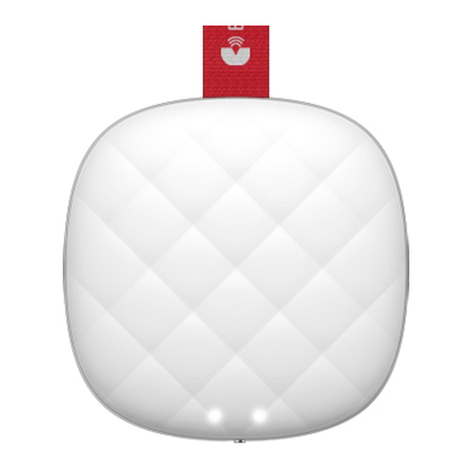
Bellman & Symfon
Bellman & Symfon Vibio User manual
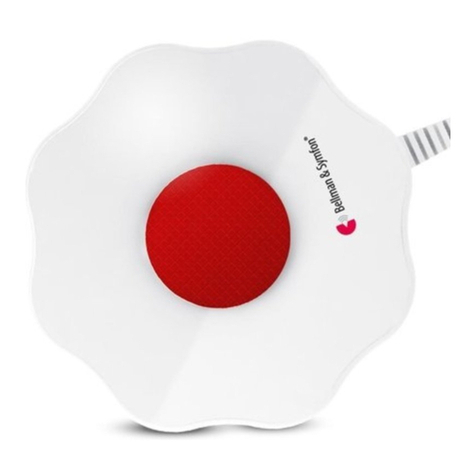
Bellman & Symfon
Bellman & Symfon BE1270 Application guide
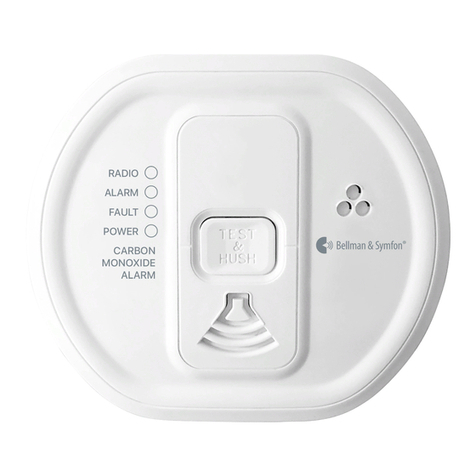
Bellman & Symfon
Bellman & Symfon BE1555 User manual
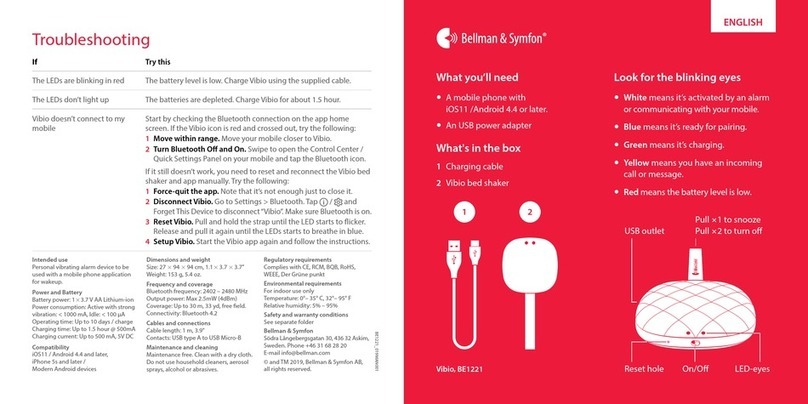
Bellman & Symfon
Bellman & Symfon Vibio User manual

Bellman & Symfon
Bellman & Symfon Vibio BE1220 User manual

Bellman & Symfon
Bellman & Symfon BE1560 User manual
Popular Security System manuals by other brands
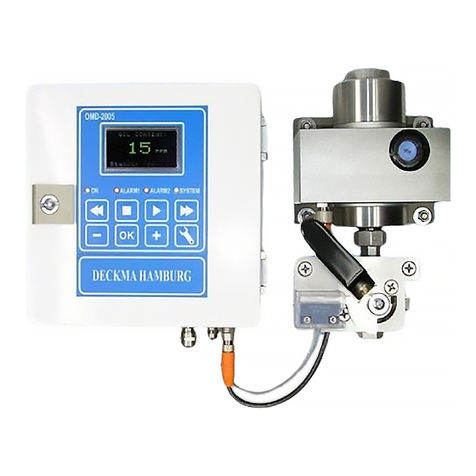
Deckma Hamburg
Deckma Hamburg OMD-2005 instruction manual

switel
switel HSIP 5700 user manual
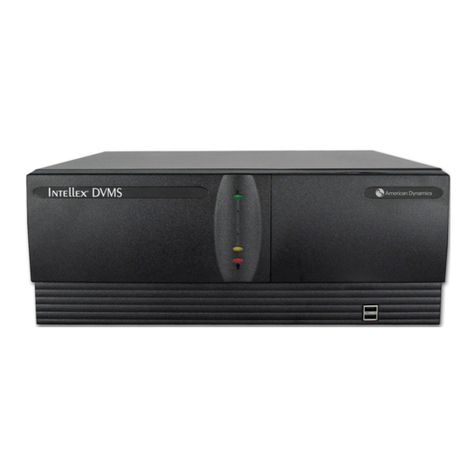
American Dynamics
American Dynamics Intellex Digital Recorder Quick setup guide

Mobi Technologies
Mobi Technologies MOBICAM AV 70060 user manual
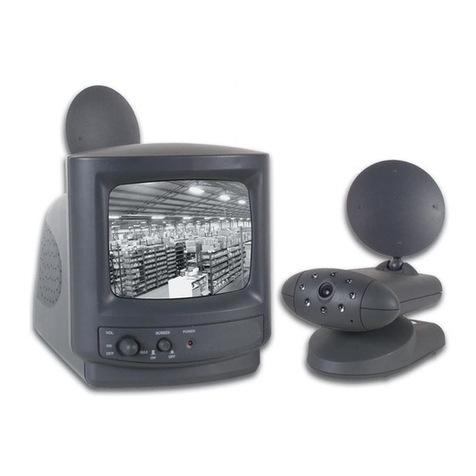
Velleman
Velleman CAMSETW1 manual
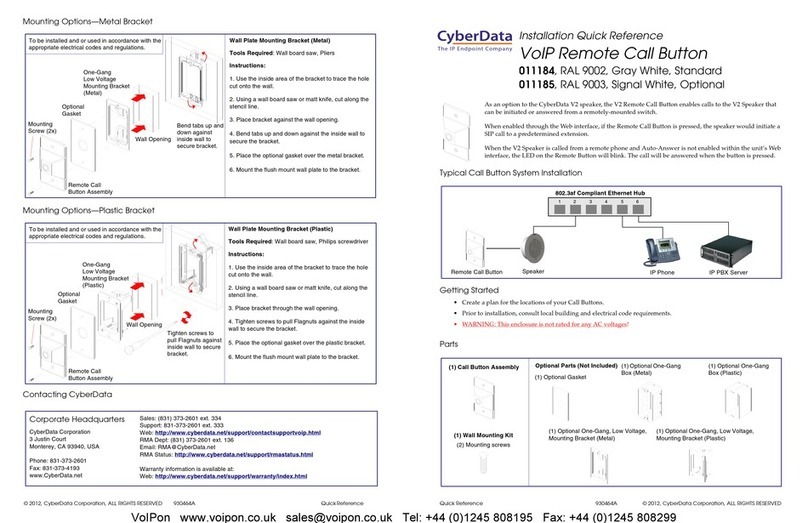
CyberData
CyberData RAL 9003 Installation quick reference

